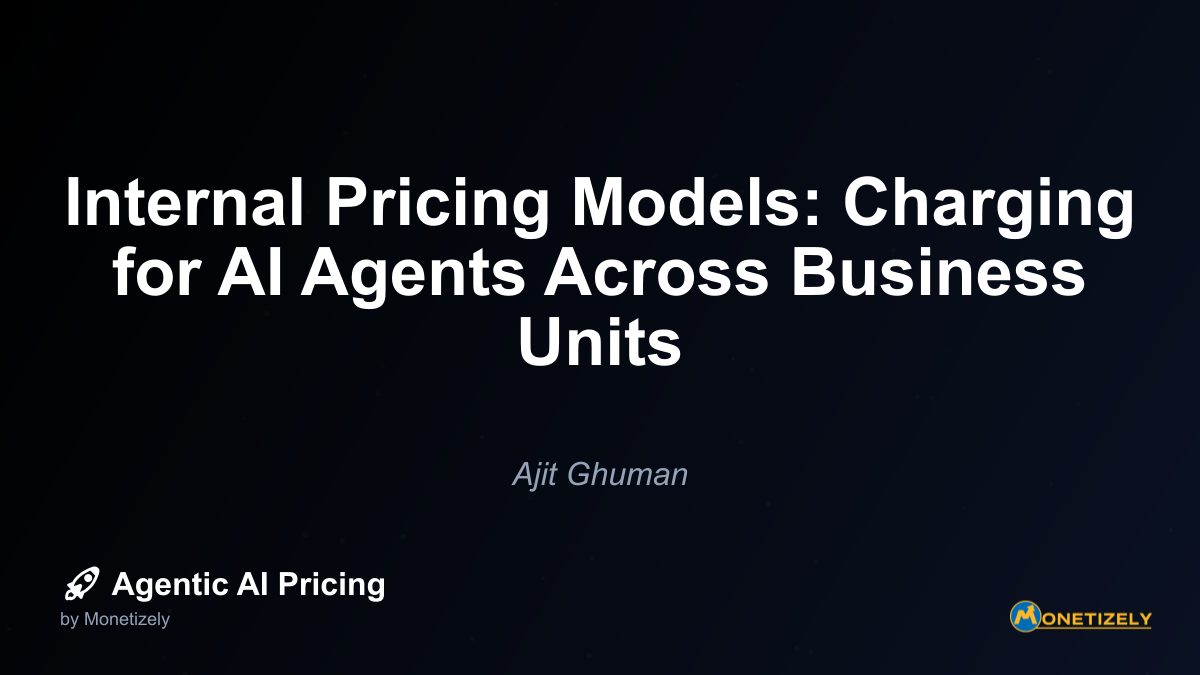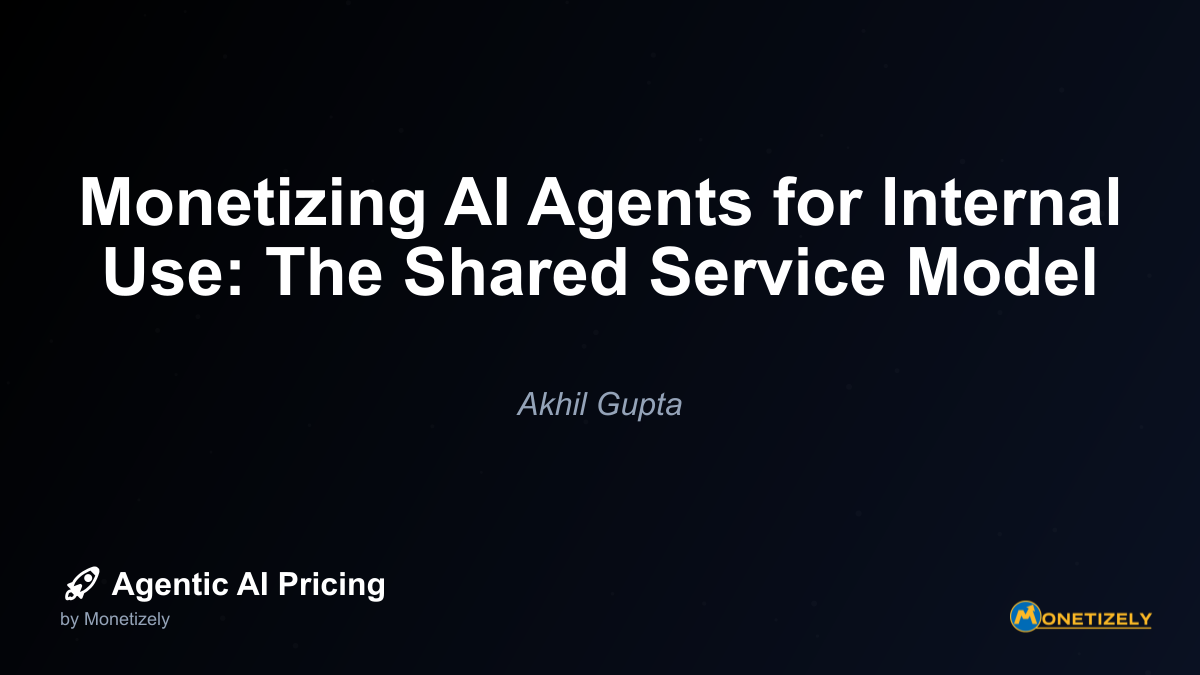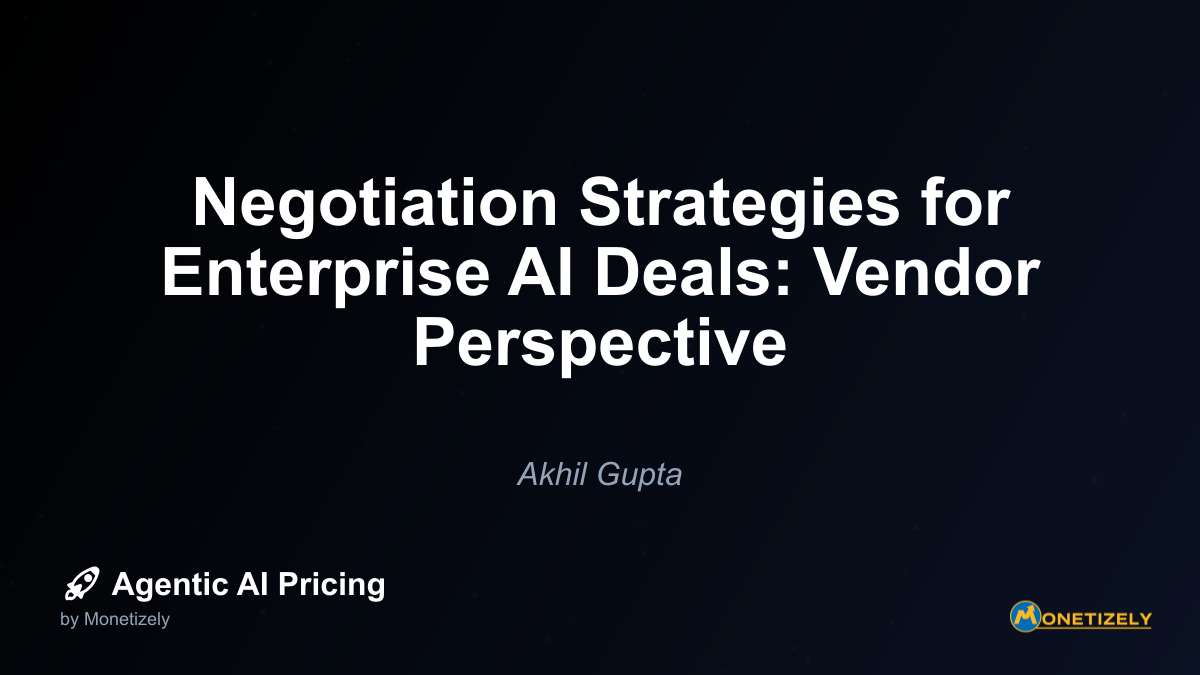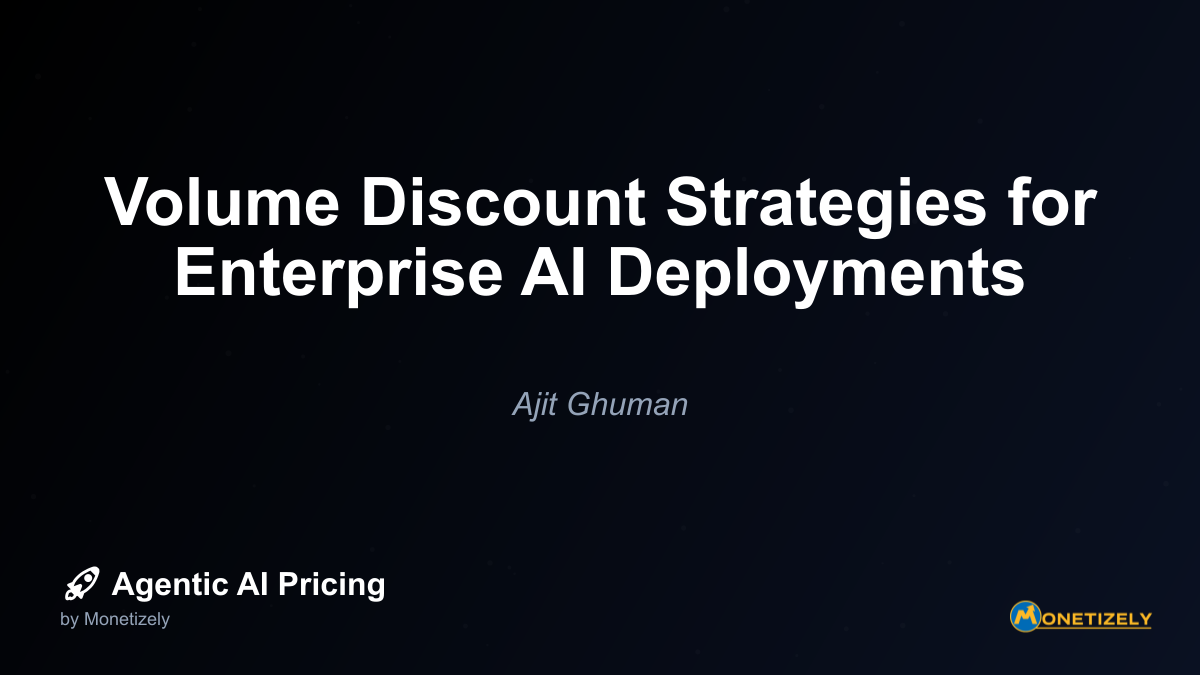· Ajit Ghuman · Enterprise · 4 min read
AI Pricing and Procurement: Navigating RFP Processes
AI and SaaS Pricing Masterclass
Learn the art of strategic pricing directly from industry experts. Our comprehensive course provides frameworks and methodologies for optimizing your pricing strategy in the evolving AI landscape. Earn a professional certification that can be imported directly to your LinkedIn profile.
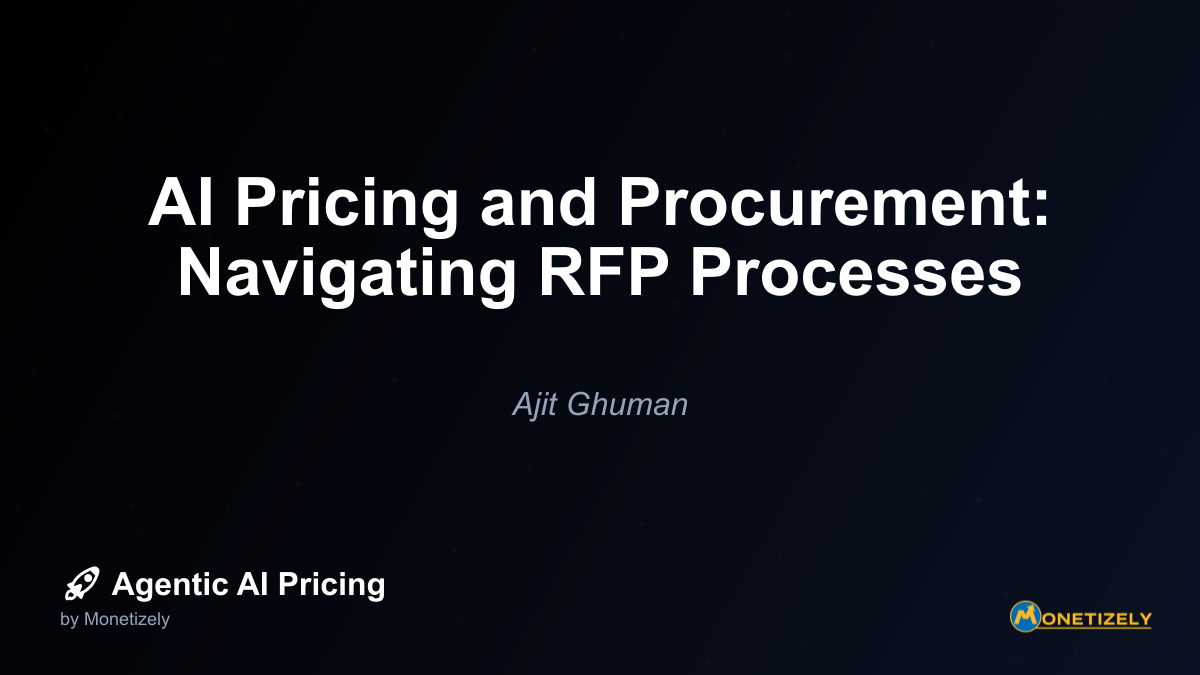
As AI capabilities mature, enterprises are exploring more sophisticated pricing approaches that better align with business value and technical realities.
1. Performance-Based Pricing Models
Innovative AI vendors are introducing performance-based pricing components that link costs to measurable outcomes:
- Accuracy Tiers: Pricing that varies based on AI prediction accuracy levels
- Efficiency Gains: Costs tied to documented process improvements
- Business Metrics: Pricing aligned with specific KPIs like conversion rates or cost reduction
- SLA-Based Components: Price adjustments based on system performance metrics
- Risk-Sharing Models: Partial payments contingent on achieving defined outcomes
Performance-based pricing models demonstrate vendor confidence while reducing perceived risk for enterprise buyers, particularly for novel AI applications with uncertain ROI.
2. Data Ownership and Value Considerations
Enterprise AI deployments raise complex questions about data ownership and value creation:
- Data Contribution Value: Pricing adjustments based on customer data contributions
- Model Improvement Rights: Terms for using customer interactions for AI enhancement
- Derivative IP Ownership: Clear delineation of rights to AI-generated insights
- Data Portability Provisions: Costs and mechanisms for data extraction upon termination
- Privacy-Preserving Options: Premium pricing for enhanced data protection measures
These considerations extend beyond traditional pricing into intellectual property and data governance domains, requiring cross-functional expertise in RFP responses.
3. Ecosystem Integration Pricing
As AI becomes embedded in broader technology ecosystems, pricing must account for integration complexity:
- API Access Tiers: Different pricing for varying levels of programmatic access
- Connector Licensing: Costs for pre-built integrations with common platforms
- Custom Integration Services: Professional services for bespoke connections
- Partner Ecosystem Access: Pricing for leveraging complementary solutions
- Embedded AI Licensing: Terms for incorporating AI capabilities within other applications
These ecosystem considerations are increasingly important as enterprises seek to avoid isolated AI implementations in favor of integrated capabilities.
Future Trends in AI RFP Pricing
The enterprise AI procurement landscape continues to evolve, with several emerging trends that will shape future RFP processes:
1. Standardization of AI Pricing Metrics
The industry is gradually developing standardized metrics for comparing AI solutions:
- Compute unit definitions for processing requirements
- Standardized performance benchmarks for common tasks
- Normalized accuracy metrics across similar applications
- Common integration complexity classification systems
- Shared implementation effort estimation frameworks
These standards will facilitate more objective comparisons between competing solutions in future RFP evaluations.
2. AI-Specific Procurement Frameworks
Organizations are developing specialized procurement frameworks for AI that differ from traditional software evaluation:
- AI ethics and responsibility assessment criteria
- Data governance and privacy evaluation frameworks
- Model transparency and explainability requirements
- Continuous improvement and adaptation capabilities
- AI-specific risk assessment methodologies
Vendors will need to align pricing presentations with these emerging evaluation frameworks to remain competitive.
3. Collaborative Development Models
The boundary between vendor and customer is blurring with more collaborative AI development approaches:
- Co-development pricing structures
- Shared risk/reward innovation partnerships
- Open ecosystem contribution incentives
- Industry consortium participation models
- Collaborative data pool access arrangements
These collaborative models challenge traditional vendor-customer relationships and require innovative pricing approaches that account for mutual value creation.
Practical Recommendations for AI Vendors
Based on observed best practices in successful AI RFP responses, vendors should consider these practical recommendations:
1. Develop a Modular Pricing Toolkit
Create a comprehensive set of pricing components that can be quickly configured for specific RFP requirements:
- Standard pricing building blocks with clear definitions
- Visual presentation templates for different pricing models
- ROI calculation frameworks for common use cases
- Competitive positioning guides for major market segments
- Value narrative templates for different stakeholder perspectives
This toolkit enables rapid, consistent response development while maintaining pricing integrity across opportunities.
2. Invest in Pre-RFP Relationships
The most successful vendors shape requirements before formal RFP processes begin:
- Educate prospects on AI pricing considerations
- Provide evaluation frameworks that favor your approach
- Build relationships with multiple stakeholders
- Share relevant case studies highlighting pricing success
- Offer assessment services that inform requirements
These pre-RFP activities create a more favorable evaluation context when formal procurement begins.
3. Balance Innovation with Accessibility
Effective pricing presentations must balance innovative models with procurement accessibility:
- Provide traditional pricing options alongside innovative approaches
- Create clear comparisons to familiar software pricing models
- Develop educational materials explaining new pricing concepts
- Offer transition paths from conventional to innovative models
- Include procurement-friendly summaries for evaluation scoring
This balanced approach accommodates organizations at different levels of AI procurement maturity.
Conclusion
Navigating the AI RFP process requires a strategic approach to pricing presentation that goes far beyond simply listing costs. Successful vendors understand the multidimensional nature of enterprise procurement decisions and develop pricing strategies that address diverse stakeholder concerns while highlighting competitive differentiation.
As AI technologies continue to mature, pricing models will evolve to better reflect value creation, shared risk, and collaborative development. Vendors who invest in developing sophisticated, transparent pricing approaches will gain significant advantages in competitive procurement situations.
For organizations on both sides of the AI procurement equation, the goal should be developing pricing structures that create sustainable partnerships rather than transactional relationships. This partnership mindset, supported by thoughtful pricing design, provides the foundation for successful long-term AI implementations that deliver ongoing business value.
By approaching AI pricing strategically within RFP processes, vendors can significantly improve win rates while maintaining healthy margins, even in highly competitive procurement situations. Meanwhile, enterprise buyers benefit from greater transparency, more accurate value assessment, and better alignment between costs and outcomes – creating a more efficient marketplace for advanced AI solutions.
Co-Founder & CEO
Ajit is the author of Price To Scale, a top book on SaaS Pricing and is the Founder of Monetizely. Ajit has led and worked in pricing and product marketing at firms like Twilio, Narvar and Medallia. His work has been featured in Forbes and VentureBeat. Ajit regularly consults with software companies from Seed stage to post-IPO on pricing strategy. Ajit is also a highly-rated co-instructor for 'The Art of SaaS Pricing and Monetization' on Maven.
Pricing Strategy Audit
Let our experts analyze your current pricing strategy and identify opportunities for improvement. Our data-driven assessment will help you unlock untapped revenue potential and optimize your AI pricing approach.

